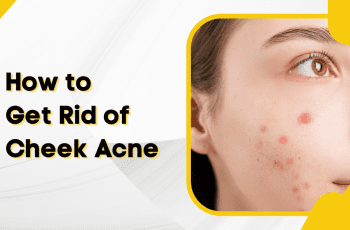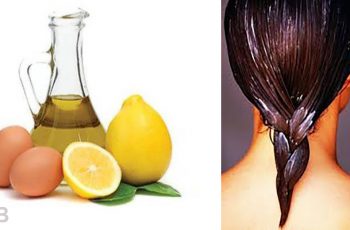Are you considering vaginal whitening for aesthetic purposes? This can be intimidating and overwhelming; however, knowing your options is key when making beauty or health choices.
In this blog post, you’ll learn about the safety of vaginal bleaching and some alternative treatments that may better suit your needs. For example, suppose you want to improve the appearance of your intimate area without risking long-term health concerns. In that case, this article will ultimately provide the answers you need to make a confident and informed decision.
How Does “Vaginal Lightening” Work?
What is Vaginal Lightening?
Vaginal whitening is a cosmetic procedure that seeks to reduce the color and appearance of the labia majora (the outer lips of the vagina) as well as the labia minora (the inner folds).
It can also refer to skin bleaching in other areas of the vulva, such as around the clitoris or anus. This procedure aims to make these areas lighter in color and more uniform in tone than before.
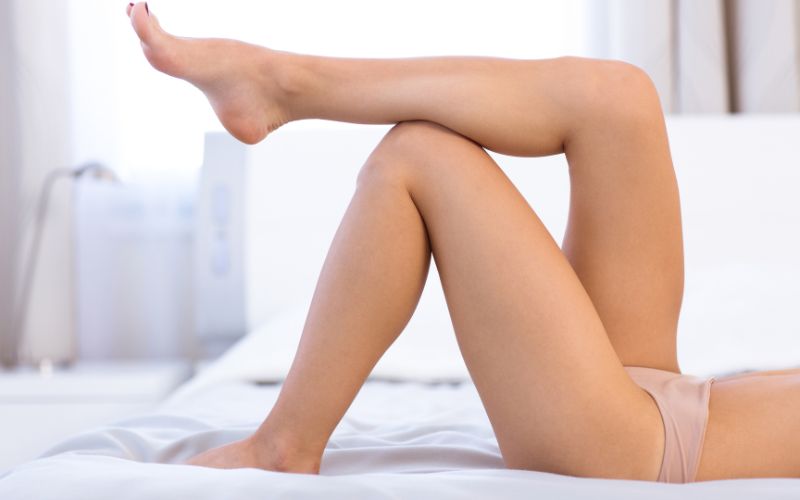
The Procedure
Vaginal lightening can be done with topical bleaching creams, laser treatment, or chemical peels. Topical creams are available over the counter, but they usually contain bleaching agents like hydroquinone which can irritate or burn upon contact with mucous membranes.
For this reason, we recommend seeking women’s health expert help for cosmetic vaginal procedures involving creams. Lasers include using an intense beam of light to target melanin in the skin cells causing them to break down.
Chemical peels use acids to remove layers of dead skin cells, thus brightening their appearance. Depending on your desired results, a doctor may suggest one method over another after assessing your unique situation.
Vaginal Whitening Creams
Intilight
This is one of the most popular female genital whitening creams today. It’s made with natural ingredients like aloe vera, shea butter, and vitamin E, which work together to lighten your skin without harsh chemicals or irritants safely. Intilight also claims to help reduce blemishes and dark spots over time for an even complexion.
Boobie Bar
The Boobie Bar cream contains a unique blend of natural oils and antioxidants to help reduce discoloration without irritating sensitive skin. It’s also packed with anti-aging ingredients like collagen-boosting peptides and hyaluronic acid that can help keep your skin looking youthful and radiant.
Pink Privates
This cream is formulated specifically for intimate areas with a combination of natural ingredients like licorice extract, mulberry root extract, green tea extract, and ginseng root extract to help brighten your skin tone while protecting it from free radical damage.
It’s also free of parabens and sulfates, so you can use it with peace of mind that it won’t cause any harm to your delicate area.
Femilift Skin Brightener
This cream is designed specifically for vaginal rejuvenation. Still, it also contains powerful brightening properties thanks to its blend of natural plant extracts such as bearberry leaf extract, arbutin extract, licorice root extract, and mulberry root extract which all work together to lighten dark areas while moisturizing your skin at the same time for a smooth finish.
Kaya Skin Illuminating Cream
Suppose you’re looking for an all-in-one solution for both intimate area lightening and anti-aging. In that case, this cream from Kaya is worth considering, as it combines powerful brightening agents with nourishing ingredients like niacinamide, glycerin, shea butter, aloe vera juice, and vitamin E to help brighten your skin tone while providing antioxidant protection against environmental factors that could accelerate aging signs over time.
Fair Look Cream
This cream has been specially formulated with herbal extracts such as liquorice root extract, white mulberry bark extract, bearberry leaf extract, Saxifraga sarmentosa stem cell culture, emblica officinalis fruit pulp, kojic acid, etc., which gently whitens your intimate area while also reducing inflammation in sensitive areas due to its soothing properties. In addition, its non-greasy formula makes it suitable for daily use.
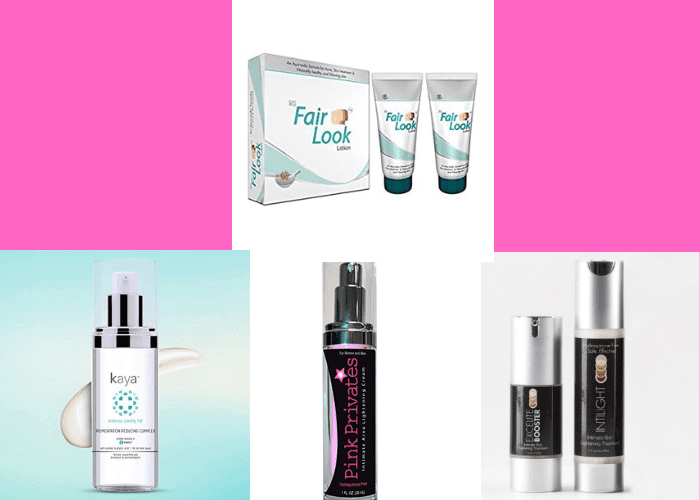
Why Do Vaginas Have Darker Skin Tones?
It’s perfectly natural for the skin around your vagina to be darker than the rest of your body. There are a lot of women who have varying shades of discoloration down there. So why do vaginas tend to have darker skin? Let’s take a look at some of the factors that contribute to this phenomenon.
Hormones and Pigmentation
The most common cause behind the darker skin tone in your vagina area is hormones. Hormonal changes can affect the level of melanin—the pigment responsible for giving color to our skin—in certain areas, including your genital area. This is why some women notice that their vulva or labia may become lighter or darker during pregnancy or menstruation.
Friction and Irritation
Another common reason why you might observe a change in your vaginal skin tone is friction and irritation. For example, wearing tight-fitting clothing such as underwear or pants can cause friction, leading to the darkening of the skin in that area. Similarly, if you use scented soaps or douches around your vulva, this can lead to irritation which also causes discoloration in that region.
Genetic Factors
In some cases, genetics play a role in determining how dark or light your vaginal skin will be. For example, if both parents have dark skin tones throughout their bodies, their children will likely have similar pigmentation, even in their vaginal area. On the other hand, if both parents have lighter complexions, their child will probably be born with a lighter shade down there.

How to Bleach Your Private Area?
Understanding the Process of Bleaching
Bleaching uses a chemical called hydroquinone applied directly to the affected area. This product helps reduce melanin production in the skin, which causes discoloration. It’s important to note that this does not permanently remove pigmentation but rather fades it over time.
Before You Start Bleaching
It’s important to take certain precautions before you start bleaching your private area. Speak to your doctor first if you have any existing medical conditions or allergies that could interfere with the bleaching process.
Furthermore, do a patch test on a small portion of your skin before applying it to ensure no adverse reactions such as irritation, inflammation, or burning. Finally, ensure you follow all directions carefully when using any bleaching agent – especially in sensitive areas like your private parts!
The Application Process
Once you’ve taken all the necessary precautions, you can start the application process. First, gently cleanse the area with mild soap and warm water before drying thoroughly with a soft towel or cloth. Then apply an even layer of hydroquinone cream directly onto the desired area. Ensure it is completely covered in cream and left undisturbed for 30 minutes or as directed by your dermatologist/doctor.
Afterward, cleanse with mild soap and warm water, then rinse thoroughly and pat dry with another soft towel or cloth.
Why Do People Seek These Treatments?
People seek out vagina bleaching treatments for a variety of reasons—some cultural and some personal. On one hand, there is a lot of pressure from society—especially from media outlets—to have perfect bodies with no imperfections or discolorations.
This pressure forces many women into feeling insecure about their bodies and wanting to change something that they may not even be unhappy within the first place.
What Are the Expected Side Effects of Vaginal Whitening Treatment?
Skin Irritation and Redness
The most common side effect of vaginal whitening treatments is temporary skin irritation and redness. This reaction is normal and should subside within a few hours after treatment.
The area may also feel tender for several days following the procedure but should not be painful. To minimize discomfort, keeping the treated area clean and dry while avoiding perfumed soaps or irritants such as chlorine or saltwater is important.
Hyperpigmentation/Discoloration
Another possible side effect of vaginal whitening treatments is that the treated area can become darker due to increased melanin production (hyperpigmentation). This can occur if too much energy is used during treatment or an underlying health issue causes dark spots in the area.
While this isn’t usually a permanent issue, it’s important to discuss any concerns with your doctor as soon as possible so that they can adjust your treatment plan accordingly.
Sensitivity/Numbness
It’s also possible for some women to experience increased sensitivity or numbness in the treated area after a vaginal whitening treatment. This is usually caused by nerve damage from excessive heat or cold during treatment. If you experience this side effect, avoiding activities that could cause further damage is best until your doctor clears you for activity again.
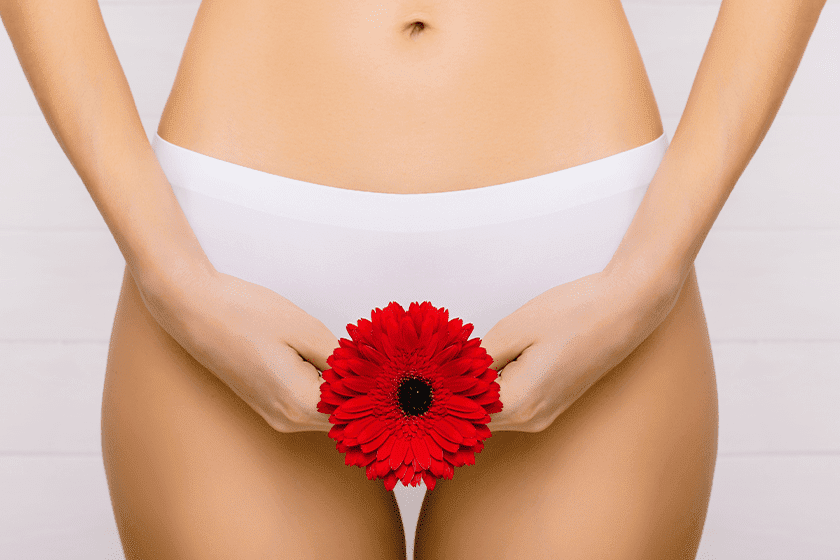
Final Thoughts
When it comes to vagina whitening treatments, it’s important to consider all aspects of the process—including potential side effects. That being said, if you seek this type of treatment for yourself or someone else, do your research and consult a trained medical professional before making any decisions.
Vaginal whitening is not a one size fits all procedure; results can vary depending on the individual, so make sure you understand what to expect before proceeding. However, with the correct information, vaginal whitening treatments can safely and effectively achieve desired results.
Frequently Asked Questions
How can I whiten my pubic area?
To get the most out of your pudding:
Mix one teaspoon of turmeric powder with two teaspoons of lemon juice.
Spread it over the top and let it sit for a few hours.
Once it's dry, rinse it off with cold water.
Doing this regularly will help you see results quickly.
Why is my private area dark?
Darkening of the intimate area can result from friction and inflammation, which has several causes. Poorly fitting underwear can cause rubbing against your skin, leading to hyperpigmentation in affected areas that have been pressed against other objects.
How do I get rid of black in my private area?
For best results, apply a paste of gram flour and water to the skin. Let it dry, then wash it off with lukewarm water twice a week.
What can I use for intimate bleaching?
Kojic Acid is commonly used as the active ingredient in products designed for vaginal bleaching. This natural exfoliant is derived from a fungus from the rice fermentation process and is typically a safer option than other chemicals.

